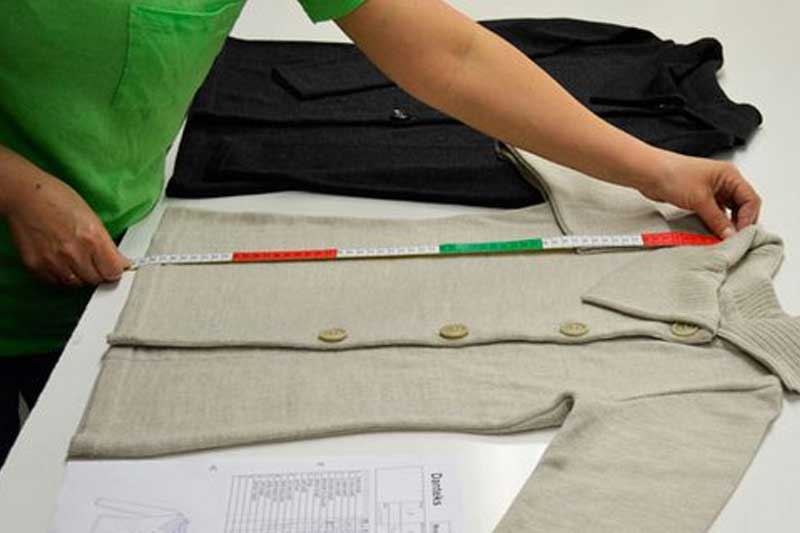Quality Control in Garment Manufacturing: What’s Changing in 2025?

In 2025, garment manufacturing is entering a new era—one defined not only by speed and scale, but by precision, consistency, and sustainability. Quality control, once dependent on manual inspections and post-production corrections, is now being reimagined as a digitally integrated, real-time, and predictive system. As fashion cycles get shorter and customer expectations rise, manufacturers can no longer afford rework, returns, or reputational damage. Let’s explore how quality control in garment manufacturing is transforming and what innovations are shaping its future.
1. Real-Time Quality Monitoring with AI & IoT
Gone are the days when quality issues were only detected at the end of the production line. In 2025, smart sensors and computer vision are embedded across manufacturing floors to detect faults in real time. These systems can spot defects in stitching, fabric alignment, color mismatches, and even thread tension—down to the smallest detail.
Artificial Intelligence (AI) plays a key role here, using machine learning models trained on thousands of defect types. These models continuously evolve, becoming better at identifying subtle variations that a human eye might miss. IoT-connected devices feed this data into centralized dashboards, giving factory managers instant feedback and allowing corrective action without stopping the entire production.
2. Predictive Quality Control
While traditional quality control is reactive, 2025 marks a shift toward predictive quality systems. By analyzing historical data, AI can now forecast when and where defects are most likely to occur. For example, a machine may perform well for a certain number of hours but begin to lose calibration over time. Predictive analytics alerts technicians before that threshold is reached, reducing downtime and defective output.
These systems also consider variables like fabric types, machine settings, operator performance, and environmental conditions. By correlating these data points, manufacturers can prevent issues even before they appear.
3. Digital Twin Technology
Another game-changer in 2025 is the adoption of digital twin technology—a virtual replica of the production process. It allows manufacturers to simulate and optimize quality parameters before actual production begins. Whether it’s testing how a new fabric reacts under specific conditions or how a new machine impacts seam strength, digital twins provide a risk-free testing environment.
This not only speeds up product development but also minimizes wastage due to trial-and-error on the actual floor.
4. Unified Quality Dashboards for Transparency
Modern garment factories are moving toward centralized quality dashboards that track key performance indicators (KPIs) like defect per hundred units (DHU), rejection rates, and audit scores in real-time. These dashboards are accessible to multiple stakeholders—from floor supervisors to brand partners—ensuring transparency and quick decision-making.
Cloud-based solutions enable remote monitoring as well, making it easier for global brands to maintain oversight on quality, even across continents.
5. Skill Development with Augmented Reality (AR)
Technology alone cannot replace human judgment entirely. In 2025, a balanced approach is being adopted, where Augmented Reality (AR) tools are used to upskill human inspectors and operators. AR glasses or tablets guide workers visually through inspection checklists, highlight potential quality risks, and provide immediate feedback.
This leads to faster training, reduced dependency on supervisors, and more consistent quality control across shifts and locations.
6. Sustainable Quality Metrics
Sustainability is no longer a marketing term—it’s now a key quality parameter. More brands are incorporating eco-certifications and environmental impact scores into their quality standards. Manufacturers are required to track and report metrics such as chemical usage, water consumption, carbon emissions, and even microplastic shedding from synthetic fabrics.
Quality audits now often include sustainability audits, and digital tools are being used to maintain traceability across the supply chain. In this context, a defect is not just a physical flaw—it could also be a deviation from ethical or environmental standards.
7. Blockchain for Quality Traceability
In a world where consumers and regulators demand transparency, blockchain technology is being leveraged to create tamper-proof records of product journeys. From raw material sourcing to final stitching, every quality inspection and approval step can be logged on a blockchain ledger. This enables brands to trace any product back to its origin in case of complaints or recalls, building consumer trust and accountability.
Conclusion: A Future-Proof Approach to Quality
The evolution of quality control in garment manufacturing is no longer a matter of choice—it’s a strategic imperative. As we head deeper into 2025, those who embrace real-time monitoring, predictive analytics, and digital-first strategies will stay ahead of the curve. But beyond technology, the mindset is shifting too—from detecting faults to preventing them, from isolated checks to holistic transparency.
Quality is no longer just about producing a perfect garment. It’s about delivering consistency, sustainability, and accountability at every stitch.
To witness these cutting-edge innovations and network with the leaders shaping the future of garment manufacturing, don’t miss Gartex Texprocess India 2025:
- Mumbai Edition: 22–23–24 May 2025 at Jio World Convention Centre, Bandra Kurla Complex
- Delhi Edition: 21–22–23 August 2025 at Bharat Mandapam (Pragati Maidan)
From smart quality tools to next-gen machinery, the event will spotlight transformative technologies and trends that are redefining the textile and apparel value chain.
More News
Smart Factories: How Automation & Software Are Transforming Textile Manufacturing
Smart Factories are no longer a futuristic concept; they are rapidly becoming the foundation of modern textile manufacturing. By integrating automation, robotics,…View More
Smart Machines, Smarter Business – Functional and Technical Machines Creating New Opportunities in Apparel
The apparel industry is no stranger to reinvention. From the earliest handlooms to the modern factory floor, every era has been defined…View More
Rural India’s Design Labs: Where Craft Meets Contemporary
The overlooked rise of design innovation beyond urban India In the vast, textured fabric of India's garment and fashion industry, the story…View More
India’s Evolving Role in Global Apparel Supply Chains
In the last few years, global apparel supply chains have been tested like never before. From pandemic-related disruptions to rising geopolitical tensions…View More
How to Identify Authentic Indian Handloom Products?
Indian handloom products are a timeless testament to the country’s rich cultural heritage and craftsmanship. From luxurious Banarasi silks to timeless Khadi…View More
Download
Register Now
Recent Posts
Show Countdown
DELHI
Bharat Mandapam (Pragati Maidan), New Delhi, India
- days
- Hours
- Minutes
- Seconds
MUMBAI
Bombay Exhibition Center, Mumbai







